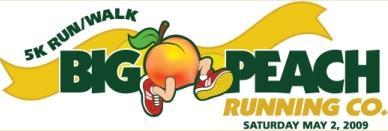
I was talking to some friends last night about the economy and the fear of many individuals about losing their jobs. I told them a penny saved is a penny earned (I came up with that). If you aren’t earning as many pennies as before, then save the pennies you’ve got. Don’t spend and you won’t need money. Even Americans are saving! This from a country that consumes probably about 110% of their income. In last quarter disposable income dropped by 1.5% but people have increased their savings by 11%. How can they do this? By not spending. However, if you must spend, buy running shoes or purchase a race entry.
Your local 5K and 10Ks should spend less to stay profitable as well. Smaller, local races are a lot of fun for all participants. They are a great way to bring a community together, try to run a PR, and keep you motivated, but they should stay in that niche. People run these races for different reasons than they do larger races and marathons, so why try to offer the same product? In order for small races to maintain their revenue stream in a poor economy they must lower their entry fees. Lower entry fees? Wouldn’t that decrease revenue? Maybe, but these small races need to understand their demand is elastic. As people decrease their discretionary spending, running a local 5k road race is one of the first things to go. It makes sense. Running a 5k really isn’t a necessity, even for the most avid runner, especially when there is an almost perfect substitute available, running 3.1 miles on the road…for free. How do you compete with free? Get as close to it as possible. Cut costs and offer a cheaper product, Sam Walton.
T-shirt: Why does every race offer a ‘technical’ T-shirt these days? I personally like to receive them but I can’t imagine these T-shirts being cost effective. If your race relies on sponsorship logos on your T-shirts, then use the traditional cotton T-shirts. They’ve sufficed as fine clothing for about 90 years. If you don’t have sponsors donating to cover T-shirt costs then think about cutting out the T-shirts all together. Trust me, runners have enough T-shirts.
Accurate Timing: I’m definitely into accuracy. I like to know exactly what time I ran…plus or minus 5 seconds. However, these smaller races don’t need chip timing. I know it is more convenient for compiling and distributing race results, but you can do this manually like it has been done for 80 years. The main benefit to chip timing is accounting for the difference in the race clock and your actual time. In smaller races this is usually within 5-10 seconds if you are a serious runner. It is already an unwritten rule, faster runners start close to the start line, slower runners line up in the back. Look, your runners are already lining up in order of preference for an accurate time! Without you saying or doing anything. Now, that’s an efficient market!
Food and Beverage: This can be minimal. Some bagels, bananas, Gatorade and water. Try to find somewhere that sells older baked goods for cheaper priced bagels. Runners don’t care, they are just trying to replenish their energy. If you live on a tropical island, climb a tree and get some bananas for free. Ok, so really I don’t know how to get cheap bananas other than by climbing ladders and jumping barrels, Donkey Kong. However, you can also save money by making Gatorade in large coolers with the mix. You can even make money on your refreshments by serving and charging for a recession proof product: alcohol! Everyone will remember your race as a good time for sure! Well, hopefully they’ll remember.
It’s time to streamline. Become more efficient. Create value. Trim the fat and run a cheap 5k. You’ve got this runner’s support.





